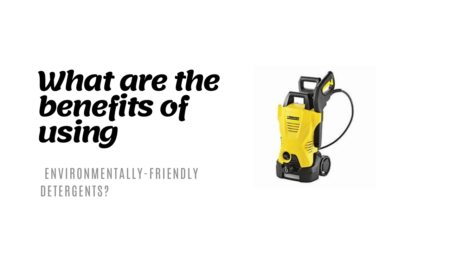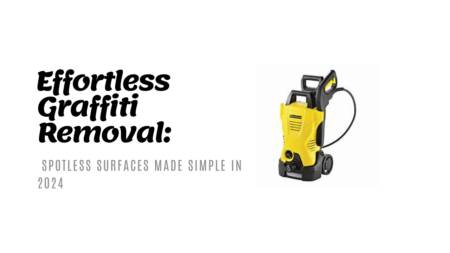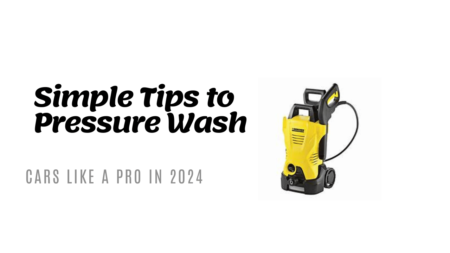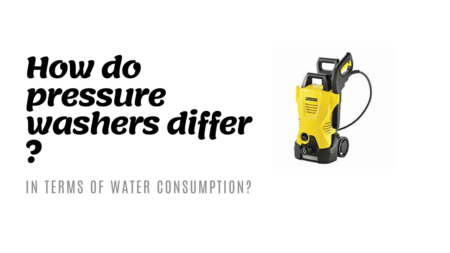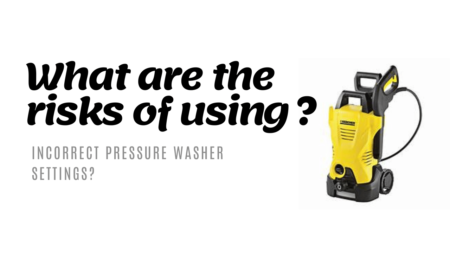
The Definitive Guide to Safe Pressure Washer Operation
Pressure washers are marvels of modern cleaning technology. Their ability to blast away dirt, grime, and peeling paint can make outdoor cleaning tasks a breeze. However, their power also represents a potential source of danger, making it crucial for every owner to understand the safe work procedures when handling these machines.
For homeowners looking to clarify the dos and don’ts of pressure washing, this comprehensive guide will serve as your roadmap to safety. We’ll explore the safe operation of pressure washers, risk prevention, and the crucial steps to follow for a risk-free cleaning experience. By following these guidelines, you’ll help ensure that your foray into pressure washing doesn’t turn into a high-pressure health risk.
Understanding the Machine: Types and Basics
Before we touch on safe procedures, it’s essential to familiarize yourself with the tool at hand. Pressure washers come in several types, but the primary variations are electric and gas-powered. Both types operate on the same basic principles involving a pump that exerts high pressure on water to turn it into a powerful jet.
Electric vs. Gas-Powered Pressure Washers
Electric models are generally lighter, quieter, and more straightforward to maintain than gas-powered ones, but they may have less maximum pressure. On the other hand, gas-powered pressure washers provide the user with more freedom of movement and typically offer higher pressure levels, making them well-suited for tougher jobs.
Components and How They Work
Each pressure washer consists of an engine (electric or gas), a water pump, a high-pressure hose, and a trigger gun. The engine powers the water pump, which accelerates the water, and the user controls the pressure and flow through the trigger gun. Understanding these parts helps in effectively troubleshooting issues and using the tool more optimally.
Safe Work Procedures for Pressure Washing
Safety begins with understanding safe work procedures. Here are the critical steps to ensure you operate your pressure washer safely:
Preparing the Worksite
Clear the area of any potential hazards, such as loose objects or wiring, that could interfere with the pressure washer or become projectiles when hit by the water jet.
Dress Appropriately
Wear protective clothing, including safety goggles, non-slip shoes, and hearing protection, if necessary. High-pressure water can injure eyes and skin – and cause serious harm if the jet strikes an ear at close range.
Know Your Equipment
Read the user manual and understand the warnings and instructions provided by the manufacturer. Each model may have specific safety considerations or operational peculiarities that are crucial to know.
Proper Usage of Nozzles
Pressure washers typically come with a range of nozzles for different spray patterns, from a narrow jet for stubborn dirt to a wider fan for general cleaning. Make sure to use the correct nozzle for the job and never point the gun at surfaces or people.
Avoiding Electrocution
Electric pressure washers pose the risk of electric shock. Always use an RCD (residual current device) and never handle the machine with wet hands or on wet surfaces.

Avoiding Carbon Monoxide Poisoning (Gas-Powered Washers)
If using a gas-powered washer, always operate it in a well-ventilated area to prevent the build-up of carbon monoxide, an odorless and deadly gas produced by gasoline combustion.
Ladder Safety
Never stand on a ladder when using a pressure washer. The force of the water can cause a loss of balance, leading to a potentially serious fall.
Best Practices for Safe Pressure Washer Use
Beyond the fundamental steps, several best practices should be part of your operational routine:
Choose the Right Tools and Accessories
In addition to the nozzle, ensure you have the right hose length and strength, the proper cleaning solution, and any attachments you might need for your specific cleaning task.
Regular Maintenance
Keep your pressure washer in good working order by following the maintenance schedule outlined in the user manual. This includes checking hoses for wear, changing the oil, and inspecting the pump.
Test-Spray on a Small Area
Before tackling a large area, test the pressure washer on a small, inconspicuous spot. This way, you can adjust the pressure if necessary and avoid damaging the surface you’re cleaning.
Secure the Work Area
Not only must you clear the immediate work area, but you should also prevent people and pets from walking into the cleaning zone by using barricades or cordons.
Distance and Position
Maintain a safe distance from the surface you’re cleaning — the force of the water decreases over distance, and you want to lessen the impact on your target to minimize damage or injury.
Responding to Emergencies and Incidents
Despite all precautions, emergencies may occur. It’s important to be prepared for such situations. This includes understanding how to stop the pressure washer in an emergency, knowing the location of the machine’s fuel shut-off, and having an emergency kit with first-aid supplies on hand.
Immediate Response to Injuries
If someone is injured by a pressure washer, it’s essential to respond quickly and appropriately. Turn off the machine, provide first aid, and seek medical attention if needed.
Reporting Problems
If you encounter a recurring issue with your pressure washer that could lead to a safety concern, report it to the manufacturer or place of purchase. This can help prevent injuries and improve the safety of future users.
Safe Storage of Pressure Washers
Once you’re done with your cleaning tasks, store your pressure washer properly to maintain its condition and reduce the risk of accidents.
Clean and Dry
After use, clean your pressure washer, remove any dirt or debris, and allow it to dry thoroughly to prevent rust and breakdown of components.
Store in a Safe Location
Store the machine in a dry, secure area where children or unauthorized users cannot access it.
Take Care of the Fuel (Gas-Powered Washers)
If you have a gas-powered washer, drain the fuel from the engine or use a fuel stabilizer to prevent damage during storage.
The Environmental Aspect
Pressure washing can result in the runoff of chemicals and debris into the environment. It’s crucial to use environmentally friendly detergents and to adhere to local wastewater management regulations.
Biodegradable Detergents
Choose detergents tagged as biodegradable and safe for the environment.
Wastewater Disposal
Consider using a sump pump or wet/dry vacuum to capture wastewater, especially if you’re cleaning an oil-laden surface. Check local regulations for proper disposal methods.
Final Note on Professional Support
For particularly tough cleaning jobs or for cleaning materials you’re not familiar with, it’s often best to hire a professional. They have the experience, training, and specialized equipment to carry out the task safely and effectively.
In Conclusion
The power of a pressure washer is neither inherently good nor bad. It’s how we harness that power that defines the outcome. By understanding and following safe work procedures, homeowners can confidently and safely use a pressure washer to tackle a multitude of cleaning tasks.
Remember, always think safety first, and if in doubt, seek professional help. With this guide as your companion, you’re ready to harness the formidable power of pressure washing — safely and effectively. Happy cleaning!
![Top 5 Pressure Washer Accessories You Didn’t Know You Needed [Updated 2024]](https://pressurwasher.com/wp-content/uploads/2024/06/Minimalist-Tutorial-Event-YouTube-Thumbnail-2024-06-03T215409.851-450x253.png)
